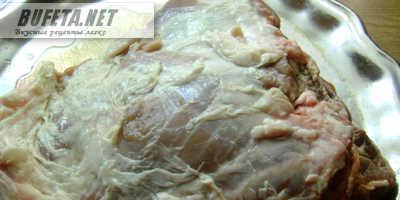Almost everyone loves smoked products; fish or meat is especially tasty. own smoking, when you know for sure that no preservatives were added during the cooking process, especially smoke smoke (various meat processing plants are very fond of it to reduce the cost of production). The smoking process itself takes a lot of time, so the equipment should not fail. If you decide to make a smoke generator for cold smoking with your own hands, the drawings and some features of assembling the device given below will come in handy for you.
Homemade smoke generator option
One of the main elements for high-quality smoking is the source of smoke. Typically, shavings or sawdust are used, which burn slowly inside the generator. At the same time, you can assemble your home smoke generator in such a way that one load of firewood will be enough to operate autonomously for 24 hours. To do this, it is enough to reduce the air flow and increase the volume of chips in the loading chamber.
There are also a lot of assembly options, it all depends on the technical capabilities and goals of creation. There are three main elements, without which no device will function correctly:
- Container (combustion chamber);
- Ejector;
- Air pump.
At the same time, the process of smoking products has its own subtleties that must be observed:
- Minimum temperature of smoke entry;
- Duration of the process;
- Do not use pine sawdust;
- All products are pre-cleaned before smoking.
To comply with all these features of the process, you need to collect the main elements correctly and carefully. And to make the products in your homemade smokehouse especially tasty, it is recommended to use chips of alder, cherry, apple, pear or willow.
Helpful information! Once your smoker is ready, try different wood chips to find the one that works best for you. the best option, because each of them gives its own special taste.
Let's move on to the features of the main elements of the smoke generator and their assembly.
Making a smoke generator for cold smoking with your own hands: drawings of the main elements and assembly procedure
First you need to prepare the elements that will be required to assemble the equipment. You can use the following drawing in your work:
So, to install a smoke generator for a cold smoked smokehouse with your own hands, you will need:
- Pipe, usually stainless steel is used. Cross section - 100 by 100 mm (it is recommended to take a diameter of 10–12 cm for a round pipe).
- Parts metal pipe up to 400 mm, diameter 2.5-4.0 cm (usually used for hot smoking).
- A corrugated plastic pipe 2-3 mm or a metal sleeve, the diameter of which will correspond to the chimney pipe.
- Compressor (you can take an aquarium version).
- Tee with a cross-section corresponding to the diameter of the smoke channel.
- Wires for connecting elements and.
- Thermometer.
All components are in open sale, and often are even at your fingertips, so getting them out won’t be difficult. There are also a lot of drawings, you can find them on the Internet and choose the one that suits your idea.
To connect the elements, also prepare a welding machine and a grinder. If you have never worked with them, then it is better to invite someone more experienced to help. The main difficulty lies in welding the fitting, making a door for the firebox and removable covers at the bottom and top.
Related article:
In a separate publication we will talk about making the right choice of this device according to your goals and budget.
We assemble a smoke generator with our own hands for cold smoking: video of the process
When you have prepared the drawings of the smoke generator for cold smoking, we begin to assemble the parts. Here are the main elements and sequence of equipment assembly:
- First, we cut off a piece of pipe for the body (0.5 - 0.8 m).
- We make the upper and lower covers to fit the outer diameter of this segment. In this case, the bottom should have sides on the sides so that the ashes do not fly out.
- On the sides of the base, slightly above the sides, drill several holes that will serve for ignition and oxygen supply (diameter 0.6 - 0.8 cm)
- To make it convenient to use the smoke generator, weld the legs, which should be about 15 - 20 cm in height.
Note! If you use a removable bottom, you will not need side doors in the firebox. For a deaf person, make a door and place it on several hinges; in this case, you need to make slits for air to flow in, just like in conventional ovens.
- The top cover must fit tightly onto the pipe, and it is also necessary to make a piece so that the unit can be opened.
- Now we weld the chimney on top of the base, retreating 50 - 80 mm from the cut.
- Weld the fitting perpendicular to the wall, it is necessary to maintain a protrusion 60 - 80 mm long. Before welding, the ends of the part should be equipped with threads for the tee.
- After welding, attach a tee, and 2 pipes to it - one down, the second to the smokehouse.
For the correct process of preparing cold smoked products, we collect all the elements into one system:
- Place the generator on a base that is made of fireproof materials, such as a concrete slab.
- Place about 0.5 - 1 liter of dry wood chips.
- Connect the pipe and chimney to the smoking chamber.
- Light the wood chips using the special drilled holes.
- Start the fan.
The process has begun, the tee acts as an injector. If you have assembled everything correctly, the combustion process will occur independently and your additional participation in the operation of the device will not be required.
Note! You can change the temperature yourself by changing the length of the chimney.
When assembling a smoke generator for cold smoking with your own hands according to the drawings, it is quite possible to use a pan, a can, or other containers in the form of a cylinder as a body. You can assemble the model without a fan, but it will function worse, since most often the natural draft is not enough for the effective process of preparing delicacies.
- If you do not want to assemble such a unit yourself, you can buy a smoke generator for cold smoking, the price of which will vary depending on the performance, chamber volume and company.
- When assembling a smoke generator for cold or hot smoking, do not forget to use the drawings and prepare all elements for assembly in advance.
- From correct sequence assembly and good welding determine how well the unit will perform. You can also try sawdust and wood chips different breeds trees to understand which shade of taste you like best.
You might also be interested in:

 How to use a multimeter correctly: simple instructions
How to use a multimeter correctly: simple instructions

 Corrugation for wires and cables: device and correct installation
Corrugation for wires and cables: device and correct installation

 Self-installation and adjusting the water pressure switch for the pump
Self-installation and adjusting the water pressure switch for the pump 
 Connection diagram LED strip 220v to the network - do it correctly
Connection diagram LED strip 220v to the network - do it correctly
Smoking is not only a way to increase the shelf life of meat or fish. This method improves their taste. This is why smoked products are so popular today.
In this review we will talk about an integral element of a cold smoked smokehouse, or more precisely about how to make a smoke generator with your own hands. 
Specifics of the concept
The source of smoke for any type of smoking is a fire. But for the cold smoking method you need smoke with a temperature of no more than 40°C. Moreover, the process itself can last several days and all this time must be carefully monitored. temperature regime, otherwise the technology will be broken. This is why the smoke generator was invented. 
A smoke generator is a smokehouse element that produces smoke in the volume required to maintain the smoking process and transfers it to the smoking cabinet. You can buy it, or you can make it yourself. 
As you can see in the photo of a self-made smoke generator, it is a small-sized device into which you pour sawdust or wood chips. There they slowly smolder and form smoke. 
It's closed, completely autonomous system. The principle of operation is based on heating sawdust and smoldering without access to oxygen. There can be many design solutions. Factory-produced models are equipped with switches, temperature control sensors, and a chip dosing mechanism. 
Generators may vary in size. The larger the device, the larger the volume of the smokehouse it is intended for.
 At self-production smoke generator drawings can be found on specialized websites on the Internet. It is not difficult.
At self-production smoke generator drawings can be found on specialized websites on the Internet. It is not difficult.









Structural device
The design of a smoke generator for cold smoking with your own hands includes:

Making the device yourself is much more economical than purchasing a purchased version. Moreover, you do not need any special tools or equipment. All materials can be purchased on the construction market. 
Compressor
Often a person who decides to take on hand made smoke generator, a question arises about the compressor. How to make it? It's simple. 
You will need a regular one computer cooler. It needs to be glued to inside segment plastic bottle, you need to put a hose on the neck. The compressor for the smoke generator is ready! It is quite functional, although it looks unpresentable. 
An aquarium compressor will also work. You don't have to use this element at all. The design will work without it, but not as effectively.






Safety precautions
Before assembling the device, you must study the main safety points:

Fuel for smoke generator
Most factory models are equipped with an electric or gas firebox. But this is financially expensive. Therefore, if you are going to make a smoke generator with your own hands, then it must be one that runs on sawdust and wood chips.












Advantages of such a device:

It is preferable to choose sawdust from deciduous trees. Conifers not suitable as fuel. They will spoil the food, giving it bitterness. 
The grind size plays an important role. So, if you plan to use small wood chips, then you will need to add a spring to the smoke generator device so that the smoke passes unhindered.
Smoked products home production- this is a real delicacy, especially if they are made using homemade smokehouse with a smoke generator made from a pipe with your own hands. Therefore, if you do not yet have such a unit, we recommend that you take the time to assemble it.















DIY photo of smoke generators



















Delicacies prepared using the cold smoking method have the following advantages: excellent taste and long term storage But in this case you cannot do without a smoke generator for the smokehouse. The installation supplies a smoky gas mixture under low pressure and uniform concentration, which simplifies the process of preparing food.
DIY smoke generator
From a homemade smoke generator for a smokehouse, due to the dispersion and direction of air from the compressor and the resulting vacuum in the chimney, smoke is drawn into the chamber where the products are previously placed. In order to properly establish the process of producing a gaseous mass (air, smoke), you must adhere to the following recommendations indicating how to make a smoke generator for a smoking apparatus.
Preparing the combustion chamber
To prepare the smoke generator body, a pipe with an internal diameter of 90 mm and a length of 50 cm is suitable. This optimal sizes, allowing you to avoid frequent loading of wood chips.
Next, drill holes for the chimney and ejector bosses. They retreat 5-7 cm from the top of the pipe and make holes based on the selected outer diameters of the chimney and boss. They also drill a hole in the lower part of the body (3-5 cm from the bottom) with a diameter of 10 mm to ignite wood chips.
A hinged bottom, made according to the diameter of the pipe, is screwed to the bottom with a wing nut in order to remove ash.
To remove ash, a grate is installed inside the housing at a distance of 2–3 cm, which is welded to the housing. You can fix the grille with an old stretched spring, hooking the other end of the spring onto the ejector tube.
The lid is made in the form of a cork. You can take a plate ∅100 mm and cut a ring 20 mm high from a DN 100 pipe and weld along the contour.
 Schematic drawing
Schematic drawing Ejector
A do-it-yourself smoke generator for a cold-smoked smokehouse must be equipped with an ejector. During installation, any metal tubes that are connected to each other are used different ways: soldering, welding, threaded connection. There are several types of smoke generators for smokehouses depending on the location of the ejector:
In our case, consider the location of the ejector in the upper part of the smoke generator.
So, transmission for a cold smoked smokehouse with a homemade smoke generator involves the use of a ¾-inch diameter tube, which serves as a chimney, a boss and an air supply fitting. The chimney and boss are welded to the holes made using a welding machine,
The fitting with the ejector tube is screwed into the boss. The length of the tube is selected based on the condition that it extends 1 cm into the chimney (more clearly shown in the schematic drawing). Next, a flexible hose from the compressor is connected to the fitting.
Compressor
A pump for supplying air to the fitting can be purchased at a pet store. These are units that are used for aquariums. The main selection criterion is productivity (liters per hour). This do-it-yourself smoke generator requires operation small compressor– up to 60 l/hour.
Experienced home craftsmen manage to build a compressor from a plastic bottle and a cooler external unit computer.
Smoking chamber
Before installing a generator with your own hands to produce smoke, you need to decide on the volume of the smoking chamber. It should not be large and can be a barrel, wooden or cardboard box. The main condition is the tightness of the joints, the presence of a smoker (for smoke circulation and condensate removal) and maintaining a constant temperature regime. 
The smoke generator is inserted into the hole and attached with a cantilever chimney to the side wall of the smoking chamber. Additionally, chimney clamps are installed or, as an option, a flange connection is made.
wood chips
Making a smoke generator for cold smoking on your own is not difficult, but for the cooking process itself you need to use the right raw materials. For this purpose, chips of fruit trees and alder are used.
Conclusion
The video below was used as a source for the article.
How to make a smoke generator for home use? For this purpose, it is allowed to use any available materials, fittings and connecting elements. According to the principle given in the article, most smoke generators for cold smoking are made with their own hands, and the design is also modified to allow the unit to be used for portable and stationary smokehouses.
Article rating:(5 ratings, average: 4,40 out of 5)
Briefly about the design of a smoke generator for cold smoking
Reading time ≈ 12 minutes
When choosing smoked meat in a supermarket, the question arose: is it possible to prepare meat products at home, making them yourself according to the developed drawings? This is what we will talk about in today’s article. What is a smoke generator, what types are they and how to assemble it from the material at hand.
Smoke generator for cold smoking
What is a smoking installation?
A home smoking setup is sufficient simple device and consists of a smoking chamber and a smoke generator. In the past, it had something like this design: as a rule - metal barrel, which served as a chamber, was installed on an embankment or a small foundation made of bricks and poured in so that there were no cracks at the base.
A horizontal underground channel lined with brick or old tiles, 20-30 centimeters high and 2 meters long, was led under the barrel. This channel was a chimney for a fire, which was built on the side opposite the barrel in a closed pit. A small hole was left for the flow of air, which ensured not active combustion, but smoldering of wood in the fire with copious amounts of smoke.
In the smoking cabinet, products were placed on grids, trays or hooks, which were cooked using cooled smoke.

Smoking installation
Another design option is made of stone. In the lower part there is a firebox with a blower to control the intensity of combustion. The chimney duct does not rise up, but goes into the smoking chamber located nearby, and from there an exit is made to the street.

Smoking installation diagram
But in the modern world, nothing stands still, everything develops and moves forward. In modern installations, smoke generators have replaced fireboxes and fires - small, compact devices equipped with electric fans or compressors for pumping air.
It is this kind of device that we will talk about today. What materials will be needed to make a smoke generator for cold smoking. What tools and equipment will you need to use?
Principle of operation
To figure out what device you have to work with, you need to understand what it is. The structure of the smoke generator and its operating principle are as follows:
- Sawdust or shavings are poured into a metal flask with a lid on top. The bottom is removable so that ash can be removed. The fuel is placed on a metal mesh that acts as a grate. Approximately 5-10 millimeters above the mesh level there is a hole with a diameter of 1 cm. The wood is set on fire through it and air flows in during the combustion process.
- A ¾-inch flue tube is attached to the top of the cylinder. On the opposite side, an ejector tube, ¼ inch thick, enters through a hole in the wall and, crossing the entire space of the flask, enters the chimney 10 mm. A pipe is connected to the outer end of the ejector, through which air is supplied from a compressor or other air blower.
- The chimney pipe goes inside the smoking chamber.
- With help gas burner, fuel is ignited through a special hole. The air supply compressor turns on.
- The air flow enters the chimney. Thanks to the design, a draft is created in the generator flask, and wood combustion products are drawn into the chimney. Cooled smoke from the chimney fills the smokehouse.
This is a schematic description of the process. The fact is that, for example, ejectors have different design, so when working with a specific device, some differences and nuances will appear. But the principle itself will not change.
Smoke generator for cold smoking
Preparation of the drawing
As in any process related to the assembly of composite structures, first of all it is necessary to prepare drawings with the dimensions of all parts and assemblies. It can be prepared based on your own views and visions, and materials can be selected in accordance with the dimensions indicated in the diagram. Alternative option– adjust the drawing in accordance with the dimensions of the materials available.
In both cases, it is important that the resulting proportions allow the construction of a workable product.
The photo below shows an example of a drawing that can be used as an example to draw up your own design solution. Before deciding on the final version of the sketch, you need to make a choice from several types of smoke generators, which have some differences:
- With upper or lower ejection. This design feature suggests the location of the ejector: air supply and smoke exhaust pipes - in the upper part of the generator housing or in the lower part.
- With or without cooler. This solution assumes that there is additional element in the circuit for supplying smoke to the smoking chamber, acting as a cooler and an additional filter for condensate.

Scheme of work
In order to take a more detailed look at all the subtleties and nuances that arise and are encountered when making a smokehouse at home, we will choose the option with bottom ejection, a cooler and a condensate collector.
Smoke generator installation method
Before you begin assembly work, you need to choose the place where the structure will be installed. The method of mounting the device, as well as some features of the arrangement of parts, will depend on this.
On the body of the smoking cabinet. In this case, the main load will fall on the chimney pipes, since it is the outlet pipe that will become the connection point with the cabinet. To distribute the load, an additional fastener can be welded to the smoke generator body.
Floor placement of the device will allow you to move the support point to the lower end of the case. In this case, the bottom must be welded, and an additional door must be made to remove ash.

Principle of operation
Materials and tools
In order to make a smoke generator for cold smoking with your own hands, having the necessary drawings, videos and photographs, you will need:
- Metal pipe with a diameter of 100 and a length of 650 mm. The body will be made from it.
- Steel cylinder Ø100, 150 millimeters long for the manufacture of a cooler filter.
- A set of Ø25mm pipes of different lengths with threads for chimney assembly – 5 pieces.
- Sheet iron 2 mm thick. The size should allow you to cut 4 circles with a diameter of 100 mm and 2 circles with a diameter of 90 mm.
- Spurs Ø25 mm of various configurations - cross and tee.
- A quick-release connection (25 mm thread) and 10 centimeters of tube of such a diameter that it fits snugly in the quick-release fitting.
- Self-tapping screws for metal.
- Rod for making a filter, 120 mm long and 10 mm thick.
- High temperature paint.
- Aquarium compressor with a capacity of 10 l/min.
- Glass jar with a screw-on metal lid to collect condensation.
To cope with such a set of materials, you need to have the following tools and devices on hand:
- Ruler and scriber - for marking.
- Angle grinder with cutting wheels for metal.
- Electric drill with drill bits.
- Welding machine with electrodes.
- Pipe wrench.
Having completed all the necessary preparations, you can begin to work. The sequence of actions is described in detail in step by step instructions presented in the next section.
Smoke generator assembly
Let's look at how you can make a smoke generator for cold smoking with your own hands by breaking installation work into stages.
Frame
- We take a pipe with a diameter of 100 millimeters and a length of 60 cm. We align the ends so that later we can install covers on them.
- The pipe Ø25 mm and 15 cm long, from which the smoke intake will be made, must have a thread on one edge. From the opposite end, in a 10 cm area, we arrange slots through which smoke will flow into the pipe. On the bottom side, opposite the slots, we drill holes.


Pipe branch
- The grate will be installed at a height of 50mm from the bottom edge, and the smoke intake will be located approximately 4cm above. Accordingly, using welding, we make a hole in the body at a mark of 9 cm from the bottom end.
- We install the prepared pipe in the place prepared for it with the slots facing up and scald it.


Smoke intake
- We make grate bars. We cut out a circle from a sheet of metal and drill 5-7 mm holes in it along the entire plane.
- We weld the workpiece 5 centimeters from the bottom of the body.
- Drill a Ø 10mm hole approximately 0.5 - 1 cm above the grate. It will serve to ignite the fuel and take in combustion air.
- We cut out a valve for the bottom of the flask from sheet iron. It must be removable so that ash can be removed. We weld small eyes to the end, like slides, into which we install the valve.
- To make the case close at the top, we grind a hardwood plug onto the top end. Preferably made of oak.
- The smoke generator body is almost ready. Let's move on to the filter and pipeline.
Installation of chimney and cooler with filter
- Screw a cross onto the thread of the smoke intake pipe.

Screwing on the cross
- We screw 2 pipes into the cross:
- In the lower hole 5 cm long with a thread at the second end. We make a hole in the lid of the jar, put it on the pipe and secure it tightly with a nut.
- A 10 cm long tube is inserted into the upper hole. A cooler will be welded to the second end.
- We close the free central outlet of the cross with a plug. It will be used to clean the smoke intake.
Cooler housing
- Cut a circle Ø100mm from a sheet of iron. Using welding, we cut out a 2.5 cm hole in the center for the chimney pipe. This will be the bottom of the filter.
- We attach the prepared bottom to the lower end of the 100x150 mm pipe using a welding machine.
- We weld a rim with holes for attaching the lid to the upper end.

Cooler housing
- We cut out the lid from iron and drill holes that exactly coincide with the holes in the rim. We make a hole in the center for the pipe.
Filter element
- We prepare 2 plates with a diameter of 90 mm, make holes in the center and install them on a steel pin 1 cm thick.
- We attach the legs to the bottom plate.
- In order to firmly secure the filter device in the cooler body, we roll up a small spring from steel wire.

Filter element
- We install the filter element with a spring into the cooler housing and screw on the cover using metal screws, having previously treated the joint with a heat-resistant sealant.
Ejector
IN top cover We weld a 10 cm long pipe with a thread at the other end.
- We screw the tee onto the thread using its central outlet. For comfort further use, the tee is positioned perpendicular to the smoke intake outlet from the housing.
- We install a pipe in one of the free outlets of the tee, the length of which will allow it to be inserted into the smoking chamber. As practice shows, this is at least 25-30 centimeters.
- We screw a quick-release connection into the opposite hole of the tee, into the shank of which a metal tube is inserted through the seal.
- A vinyl or polyethylene supply tube from air compressor. As already stated, its power should not be less than 10 liters/minute, otherwise the efficiency of the entire installation will be reduced to zero.
- The end of the tube located inside should be longer than the tee and extend 10 mm inside the chimney pipe.

Operating procedure
Before starting work, we carefully check the reliability of all mechanical connections: the covers must be installed in place and closed, the pipes must be tightly fixed in the fittings.
A container for collecting condensate is attached to the lid. No matter how dry the fuel is, it still contains moisture. In addition, there are various resins and heavy impurities. To get rid of these additives, a filter is installed in the cooler, on the “plates” of which all excess settles and, condensing, flows down into a collection container.
The air supply pipe from the compressor is connected to the ejector inlet. The electrical cable of the compressor is laid and connected to the power supply in compliance with all safety standards and regulations. You must always remember that the installation uses open fire and emit heat, which creates an increased danger for nearby electrical communications.
Pour dry wood chips or shavings into the generator flask and close the lid. Using a lighter, or best of all, a gas burner, we ignite the fuel. The wood begins to burn, emitting thick smoke.
Turn on the compressor. The air stream mixes with the smoke, creating draft in the chimney and increasing the power of the flow.
The wood chips should lie quite tightly, but you cannot compact them too much, as they can clog the smoke intake.
Fuel selection
As for wood species, it is strictly not recommended to use waste from resinous tree species, such as spruce and pine. Walnut shavings will add bitterness to the smoke.
Fuel from fruit trees has a pleasant aroma that directly depends on the breed. The most suitable are apple, pear, apricot and alder.
Smoking cabinet
It must close tightly and have a chimney at the top to remove smoke. The smokehouse, depending on the intensity of use, can be made in the form of a “house” or a cabinet made of metal or wood.
To place products prepared for smoke treatment, special shelves, nets or hangers with hooks are installed.
The simplest and budget option is an ordinary metal barrel with a capacity of 100-200 liters. The top part is cut off so that you can load the food, and then I cover it back with a lid. A more “civilized” solution is to place the barrel in a lying position, cut out part of the side surface, then fix it on hinges, making a door. A continuous shelf made of mesh is installed inside.

If after reading the article and viewing the photos you still have questions, the video posted at the end of this section will help clarify some points.
You yourself were able to see that, having the correct drawings, building a smoke generator for cold smoking with your own hands is not such a difficult task. Undoubtedly, it requires certain skills and preparation. Not everyone knows how to use welding machine or have it at home. But, using the help of friends or acquaintances, you can make a device that will become a source of aromatic and tasty dishes on your table.
Video: smoke generator
Cold smoking, be it fish, meat, poultry or cheese, is a rather lengthy process. During this time, pathogenic microorganisms are destroyed and the products are saturated with exquisite taste and aroma. And the products themselves can be stored after cold smoking long time. Cold smoking requires smoke with a temperature of no higher than 40C. And in order to reduce the temperature of the smoke from the fire, it was located at some distance from the smokehouse. The smoke went through a chimney in the ground and naturally cooled. This was the case before (although some people still use this method). Currently, a smoke generator is used to simplify the process of cold and hot smoking.
The basic principle of operation of a smoke generator is the smoldering of wood chips or sawdust with insufficient oxygen. Industrial and factory systems have automation for sawdust dosing and air flow speed and, as a result, a minimum of operator participation. But you can collect homemade smoke generator no worse than factory analogues.
How to choose the right smoke generator
To make a smoke generator yourself, you need to understand the principle of its operation and know its schematic structure. At home, the most optimal smoke generator for cold smoking is considered to be one that is easy to disassemble for cleaning; it must be mobile so that it can be moved to another place. Not large in size and economical, at the same time it should be productive for your volume. Possess a simple design and maximum strength. To ensure that the smoke flows in the required flow, an adjustable air blower is installed in the smoke generator.
Most smoke generator circuits have an upper smoke intake or a lower smoke intake. In the first option, the smoke from below passes up the combustion chamber through the wood chips, is partially cooled and enters the smoking cabinet. The disadvantages of this type include frequent attenuation of wood chips during smoking; a more powerful compressor is needed. And during operation, the condensate that forms flows down the wood chips, saturating it. 
With lower smoke intake such problems do not arise. But it is necessary to increase the length of the chimney or make a special cooler in the form of a cylinder for additional cooling of the smoke. And also control the temperature of the supplied smoke.
Important! Whatever the design of the generator (lower or upper), before loading wood chips into the combustion chamber, it is necessary to dry it. Wet fuel produces a lot of condensation when smoldering. Therefore, pre-drying and moisture control of the chips is recommended.
How to make a smoke generator for a smoking cabinet
The smoke generator for a cold smoked smokehouse consists of several modules:
- The combustion chamber
- Ash pan
- Smoke pipe
- Condensate collector
- Ejector
- Fan unit
Do-it-yourself smoke generator components for cold smoking, drawing with a description of all components.
The combustion chamber
Wood chips smolder in the combustion chamber; before you start making them, you need to decide on the material. Usually the chamber is made from a pipe, preferably from food grade stainless steel. The pipe can be either round or square; you can use a fire extinguisher of a suitable size. The pipe body should have a diameter of 90-115 mm, the height of the pipe should be from 50 cm to one meter. Plumbing and heating stores sell chimneys made of of stainless steel different diameters and lengths that are ideal for the combustion chamber. You can also buy plugs for the pipe there. ![]()
Grate and ash pan
A grate made of perforated metal is installed in the lower part of the combustion chamber. The wood chips burn on the grate, and it also prevents the wood chips from falling down. The grate bars can be made from a metal sheet of suitable thickness, often by drilling holes with a diameter of 4-6 mm. A hole is drilled in the pipe just above the grate for
igniting wood chips with a diameter of 7-10 mm. This hole also serves as a blower. In some designs, two holes are made opposite each other. If necessary (too much fuel consumption), one hole is covered. 
Under the grate there is an ash pan, which is also the bottom cover that serves to collect ash. The removable ash pan is convenient because it can be emptied of its contents at any time and the cleaning process of the chamber is simplified. The dimensions of the ash pan are 4-6 cm in height. At long work The volume of ash in the smoke generator is very small, so this size of the ash pan is enough for one or two loads. 
Smoke pipe
From the combustion chamber, warm smoke enters the chimney, where it is partially cooled. The larger the volume and height of the chimney, the better the natural cooling. As practice has shown, it is better to make the hole for the outlet pipe at a height of 5-7 cm from the grate. The outlet pipe inside the combustion chamber does not need to be protected with a mesh (limiting the entry of chips or ash into the pipe), this can lead to rapid coking of the inlet. 
First comes the 3⁄4 pipe, then the 3⁄4 cross. A plug is screwed into the end of the cross for inspection and cleaning. A 50 cm long pipe goes to the top through which the smoke enters the ejector and then into the smoking cabinet. This pipe serves to cool the smoke. The length of the pipe usually does not exceed the length of the combustion chamber. In some smoke generator designs, the vertical pipe is replaced with a pipe bigger size, equal to the diameter of the combustion chamber. I rightfully believe that warm smoke cools down better.
Condensate and resin container
Along the vertical section of the chimney, the smoke rises, condenses on the walls of the pipe and flows down. In addition to moisture, this condensate also contains harmful substances and resins, which are not needed on the smoked product. At this stage, the smoke is purified from heavy unnecessary fractions. A condensate collection tank is installed at the bottom of the cross.
The condensate collector is made from ordinary glass jar with thread and a lid for it. This design is convenient for quick cleaning. 
Ejector
One of the main components for a cold smoked smoke generator is the Ejector. It is installed on the upper 3⁄4 tee of the chimney. The ejector consists of an air supply fitting into which a tube with a diameter of 6-10 mm is attached. A quick-release connection for a watering hose is used as a fitting. A tube made of aluminum or
stainless steel, if necessary, the hole for the tube is drilled to the desired size.
After screwing the fitting into the tee, the tube should protrude by 1.5-2 cm (green mark in the figure), this is selected empirically during testing of the device. This distance is of great importance in the operation of the smoke generator. Therefore, when assembling the tube, you need to take it with a reserve. 
Compressor or fan for smoke generator
The air required for uninterrupted smoke draft is supplied to the ejector fitting. The most common device for this is an aquarium compressor for a smoke generator or use a computer cooling cooler. You don't have to buy finished device, but make a compressor for a smoke generator with your own hands. 
It will require a housing, which uses an electric junction box suitable size. A radial fan (snail) for a PC can be purchased at any
computer store. Be sure to install a fan speed controller made according to a simple scheme. 12 volt power supply. Second part of the quick release coupling. Next, using glue and screws, the fan unit for the smoke generator is assembled. 
How to handle a smoke generator
So, the smoke generator for smoking is made with your own hands, all that remains is to put it into operation.
- Pour the required volume of dry wood chips into the chamber with a fraction of 7-12 mm. Close the lid. How much wood chips do you need to add per hour of work? The consumption of wood chips in a smoke generator is individual for each person. Depends on several
parameters. Chip moisture content, wood chip fraction, compressor power, pipe diameter. - The compressor turns on at full power.
- Light the wood chips in the pilot hole using a gas torch.
- After igniting the wood chips, install required power fan for the desired amount of smoke.
- After 2-3 smoking processes, it is necessary to clean the chamber, chimneys, and grates.
 . Full, step by step description with comments, photographs, diagrams and drawings.
. Full, step by step description with comments, photographs, diagrams and drawings.









